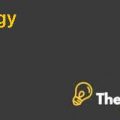
Introduction
The Breeden Security Inc. manufactures radio equipment and other signaling devices. The subsidiary of this company is located in the United States and is operated by its younger members. After one year of operations, Marlene Baer, the supervisor of Breeden security was hired to run a comprehensive and a relevant examination about their costing and profit performance in the year 2008.
The Actual revenues were shocking for the corporation, having one hundred thousand units sold for the product RC1 and eight thousand for the product RC2. Personnel of the company were positive about these revenues. This all led to the rapid growth of the organization.
While on the other hand, Marlene Baer decided to appraise her facts and figures by editing some ideas to perceive if the anticipations that the company had at the commencement of the year were fruitful or not.
Baer acknowledged that the developments used by the holding company on applying direct labor hours might not be the optimal way to deal with the manufacturing overhead costs that comes together and apportioning them to RC1 & RC2. But the problem arises due to the cost of allocation method. She does not know the proper allocation; additionally she does not have any idea which technique of costing gives more appropriate knowledge about the cost and profitability.
Moreover, at the same time, Baer raised questions about the effectiveness of using direct labor hours for all cost basis of the company. On the other side, she clarified that it was too ambiguous and she was unaware of the company’s holdings. For the solution of all these problems, the company applied both techniques of overhead allocation which were traditional overhead and Activity based costing respectively. Apart from this other questions in this case study also relate to breakeven analysis and the negative impacts of building the inventory on the profits for the company. However, more light has been placed on the activity based costing system to allocate the costs fairly so that the company could achieve customer and product profitability.
Analysis
The analysis was prepared according to the case relevance of costing techniques. In the analysis, there are many things involved for extracting the optimal solution for the company. After observing the Baer's original analysis of the given data there are many facts that need to be emphasized and others that need to be analyzed. The good features of her analysis are the way she shaped the cost groups and exploited activity-based costing for further benefits.
As stated formerly, she scattered 3 manufacturing overhead amounts for assembling, fabrication, packing and shipping in percentage to direct labor. She knows that there are several basis for the allocation such as machine hours and product units etc. The reason for choosing direct labor is because it has to be done in an order that it is customized to the extra labor force.
Therefore, she thought that direct labor is the optimal allocation for packing & shipping. The negative point is the extra expense which will be bearable from the profit of the company. For this reason, RC2 sales are not much popular. She accepted it in the right way by consuming the ABC method to control a more accurate cost.
Through analysis, the point comes in term of cost reduction, adequate cost allocation and an actual picture of the organization profits. The analysis has been done in the form of questions and answers which are discussed below.
Question 1
Compute the overhead rates for Fabrication, Assembly, and Packing and Shipping using the data from Exhibits 1, 2, and 3.
Answer 1
The overhead rate is calculated on the basis of the Product unit which is more appropriate from the point of the analysis. These figures are extracted from the exhibit 2 & 3, and also depicted in the excel sheet named as advanced managerial accounting which are annexed with this report. The overhead rate is also attached in the Appendices of this report.
The fabrication rate is 0.63 per labor, assembly is 0.53 per labor and packing & shipping is 3.5 per labor. These calculations have been done on assumption of managerial accounting with the best judgmental techniques.......................
This is just a sample partial case solution. Please place the order on the website to order your own originally done case solution.













